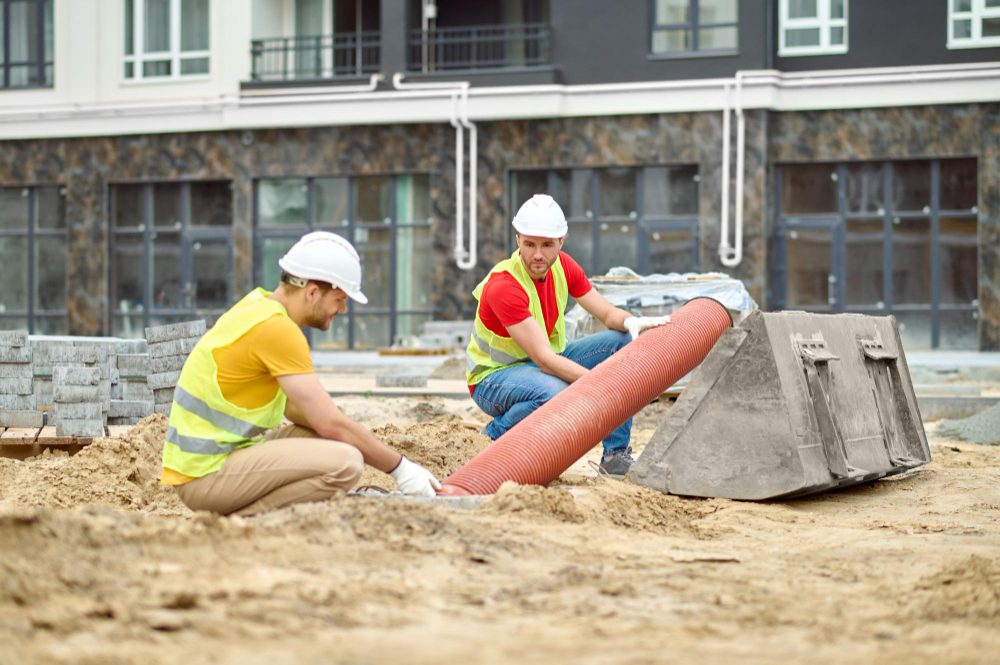Your home’s sewer line is one of the most important, yet often overlooked, systems that keeps your house functioning properly. Like any other utility, it requires regular maintenance and inspection to prevent major issues down the road. Being proactive about sewer line care can help avoid expensive emergency repairs, property damage, and health hazards. This article will explore the key reasons you need preventative sewer line inspection and tips to safeguard your home’s system.
Why Regular Inspection is Crucial
Though it runs underground and out of sight, your sewer line faces wear and tear just like any other home system. Over time, a variety of factors can cause pipe damage or clogs that lead to sewer backups and overflow into your home. Having a professional inspect the line at least once per year can catch any problems before they turn into plumbing disasters.
Identify Early Signs of Trouble
Annual video inspections allow a technician to visually examine the entire line with a special waterproof camera. This can detect issues like:
- Cracks or holes: Allow groundwater to infiltrate the line and cause backups or collapses. Small cracks may go unnoticed until they expand into significant breaks.
- Root intrusion: Overgrown tree roots that penetrate the line and obstruct flow. They grow larger over time if not removed.
- Settling or misalignment: Sections that have sunk or shifted out of place, creating trapped debris.
- Corrosion and wear: Most lines last 30-50 years. Older pipes show their age through corrosion, leaks, and blockages.
Spotting these problems early provides time to repair them before major damage occurs.
Assess Condition and Functionality
Inspection provides vital information about the current state of your entire sewer line. The technician will check that all joints are watertight, sections are properly aligned, and the flow remains unobstructed. They can advise you about areas that need repair now versus sections you can monitor. This allows you to be strategic about maintenance costs.
Determine Scope of Necessary Repairs
Once the technician locates any issues, they can detail the repair options and equipment needed. For example, you’ll know if:
- Simple cleaning is required to clear out debris
- Select segments need replacing or relining
- Extensive repairs are needed throughout
This makes it easier to set budgets and make arrangements before problems escalate. A warranty provided through professional sewer repair services may also help cover future issues.
Provide Documentation
The full video recording and technician’s report become useful documentation to inform any repairs or future inspections. You’ll have professional documentation of your sewer line’s baseline condition. Any changes over time are easy to identify and monitor.
How Often Should Inspections Occur?
Most experts recommend a professional sewer scope at least once per year. However, certain factors may require more frequent inspections:
Age of Sewer Line
- Under 10 years: Every 2-3 years
- 10-20 years: Annually
- Over 20 years: Every 6 months
Older pipes show more wear and are prone to age-related damage. Increased frequency after 10-15 years can detect issues before failure.
Pipe Material
- Cast iron: Annually
- Orangeburg: Every 6 months
- PVC or ABS plastic: Every 2-3 years
Some materials are more vulnerable to cracking, leaks, and blockages over time. Frequent inspection covers vulnerable lines.
Signs of Problems
- Slow drains
- Gurgling sounds
- Foul sewage odors
- Backed up fixtures
- Visible leaks
- Vermin infestation
Recurring drain performance issues, odors, water around pipes, and rodents signal potential sewer trouble. Have the line examined to determine any repairs needed.
Recent Tree Removal
Root growth is a main cause of sewer damage. If trees near your lateral line have been cut down, new root shoots could penetrate the pipe more aggressively. Increased inspections can find intrusion points.
Major Plumbing Projects
Modifications like building additions, pool installation, or replumbed fixtures can unintentionally disrupt your sewer line. Verify proper flow and functionality after these projects.
DIY Inspection Options and Limitations
Today’s plumbing cameras make it possible to visually inspect your pipes without calling a professional. However, DIY sewer scopes have some significant limitations versus pro inspections.
Accessing the Full Line
The “clean out” access point allows you to insert a camera 15-30 feet into your home’s lateral line. But it won’t reach the main line extending to the municipal sewer. Any issues beyond your lateral line won’t be detected. Professionals have equipment to examine the entire line from your home to the street.
Moving Beyond Drain Clogs
A basic handheld camera can help locate and clear a simple toilet or drain clog. Yet it lacks the lighting and maneuverability to thoroughly inspect pipe walls for cracks and roots. Detailed inspections require commercial-grade waterproof cameras on cables.
Assessing Damage
While DIY cameras provide visuals of the inside of your pipe, most homeowners lack the expertise to gauge damage or deterioration. Professionals examine thousands of feet of pipe annually and can accurately determine the condition and necessary repairs.
Documenting Issues
Without a way to record and document the inspection findings, it’s hard to monitor changes over time. Technicians use digital recording equipment so you have documentation to inform repairs and compare to future inspections.
For serious preventative inspection, call a professional sewer and drain specialist.
What to Expect During a Professional Inspection
Knowing the process technicians follow provides confidence in your annual home plumbing checkup. Professional sewer line inspection involves three main stages.
Line Access
First, the technicians will locate the main access points to your home’s system:
- Cleanout: Gives direct access to the lateral line that connects your home to the main line. Often found in the yard or basement.
- Main line: Technicians may need to remove a manhole cover in the street to reach the municipal sewer pipe with their camera.
- Drain and vent lines: Accessing the lowest house drain line allows inspection of vent connections critical for proper drainage.
Interior Inspection
From the access point, the technician feeds a specialized sewer camera on a cable through your pipes:
- Camera: About 2-3 inches in diameter, with lighting and a video camera to provide a full color view down the length of the line.
- Monitor: Displays the live video feed to identify any concerns like damaged or misaligned sections, invading roots, blockages, or cracks.
- Digital recording: Saves the footage for your records to document the interior condition.
Exterior Inspection
Above ground, the technician visually examines all interior plumbing and fixtures to check:
- Pipe alignment and joints: Looks for any sections that have settled, shifted, or leak at joints.
- Vent stack: Verifies proper operation to prevent drain backups.
- Fixture functionality: Turns on taps and flushes toilets to check for smooth water flow.
At the end, you receive documentation of the inspection findings and recommended next steps.
Top Tips to Prepare for Inspection Day
Follow these handy tips to get your home ready for a smooth, effective sewer line examination:
Clear access to cleanouts and drains.
Remove any debris or landscaping elements blocking access panels so technicians can easily locate them.
Run water beforehand.
Activating all plumbing fixtures before inspection helps purge the lines and allows cameras to run smoothly from start to finish.
Keep pets contained.
Loud equipment or having your yard dug up may stress pets. Keeping them indoors prevents any disruptions.
Remove fragile items from over drains.
In case access points in cabinets or vanities need opened up, move nearby fragile decor out of the way.
Don’t schedule during home renovations.
Wait until all construction settled before inspecting, since debris from projects can clog or damage lines.
Planning ahead ensures inspection day goes smoothly and technicians can thoroughly evaluate your system.
Signs It’s Time to Call for Professional Drain Cleaning
While sewer inspections help proactively avoid disasters, sometimes drain problems pop up unexpectedly. Watch for these common signs it’s time to contact a professional drain cleaning service:
Slow or Gurgling Drains
Drains that empty slowly point to partial blockages. Gurgling noises signal air trapped from accumulating debris. Tree root masses are a common culprit.
Sewage Odors
Foul smells from drains or around exterior vents indicate sewer gas. Rising gas traps mean the flow is obstructed. Proper cleaning or repair is needed.
Backed Up Fixtures
Sinks or toilets that overflow or won’t flush can indicate significant clogs or main line backups. Let pros determine if cleanout or repairs will solve issues.
Visible Leaks
Water spots or soggy soil around pipes may reflect cracks or damaged joints. Professionals can pinpoint if selective repairs or whole line replacement is needed.
Don’t ignore these warning signs. Calling drain experts can resolve backups quickly before they create costly home damage or health hazards.
How Professionals Clear Clogs and Restore Flow
Professional drain cleaners have industrial-strength equipment and methods to handle even severe clogs and restore smooth pipe flow.
Powerful Drain Snakes
High-powered, flexible cables with cutting tips physically grab and shred debris that’s stuck. Snakes can target specific problem drains or clear a whole system from a main access point.
High-Pressure Water Jets
Truck-mounted water jets blast clogs away with up to 5000 PSI of cleaning power. The nozzles can target roots, grease, and soap buildup throughout the line.
Vacuum Extraction
Industrial suction equipment physically removes loosened gunk and debris so it doesn’t resettle into new clogs. Full line clearance keeps flow free.
Drain scope Cameras
A tiny waterproof camera on a flexible cable pinpoints all remaining obstructions. Precision tools can then target extraction.
Thorough professional cleaning keeps your drains and sewer line working in mint condition.


